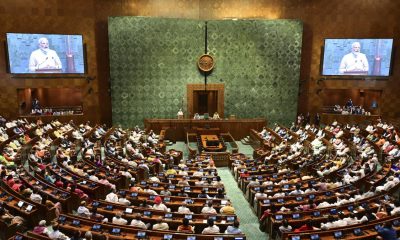Analysis
NWSC Boss: We shall improve water supply reliability

silver mugisha managing director nwsc
It is planned that before June 2014, the following towns will also be taken over by NWSC: Lyantonde, Ibanda, Mayuge, Bombo, Kamwenge, Kitagata, Kigumba, Kiryandongo and Bweyale.
This take-over of more towns is in line with the Government’s plan for 100% coverage and with our 5-Year Strategic Direction in which NWSC aims at effectively increasing both service and geographic coverage.
Q2. What is the percentage of Kampala with safe piped water from NWSC?
The water service coverage within the boundaries of Kampala Capital City is over 90%. It is worth-noting, however, that the service coverage for the Greater Kampala Service Area that includes Kampala Capital City as well as parts of Mukono and Waksio Districts is about 77%. It is also worth-noting that some parts of the service area are water stressed due to the rapid growth in demand and that some of the low income communities are not able to access safe water supply at the NWSC pro-poor tariff.
Q4. What challenges is NWSC facing in providing water and sanitation services in the areas it covers?
The main challenges faced by NWSC include: deteriorating and depleting raw water sources, rapid urban population growth causing demand to outstrip our capacity and resulting in water shortages, water theft and illegal water use, counterfeit and poor quality products on the market, and inadequate physical planning to cater for rehabilitation and expansion of public utility infrastructure.
Q3. What is NWSC doing to improve access to sanitation services in Kampala?
NWSC is implementing the Kampala Sanitation Programme (KSP). The KSP includes among other things, the construction of the Lubigi and Kinawataka Sewerage Systems and expansion of the Nakivubo Sewerage System. This will enable connection of more people and customers to the sewerage system and also improve the quality of effluent discharged to receiving bodies. The Lubigi system has recently been commissioned while the Works for the Nakivubo Sewerage System commenced towards the end of 2013.
During the last four years, NWSC took over from National Housing and Construction Company (NHCC) Ltd the operation and maintenance of waste stabilization ponds (sewage ponds) in Ntinda and Naalya. As a result more customers in the Ntinda Minister’s Village Area and in Naalya Estate have been connected. More importantly though, there has been a marked improvement in the effluent quality from these ponds.
NWSC in collaboration with stakeholders is undertaking some integrated approaches. NWSC is promoting isolated systems as well as improved on-site sanitation systems. In this vein, NWSC signed a Memorandum of Understanding (MoU) with KCCA to increase the number and coverage of public toilets especially in the informal settlements. Prior to this MoU, NWSC had already constructed about 50 public toilets (each public toilet provided with showers and 2 to 6 stances) as part of improving urban pro-poor services provision. NWSC is also establishing a strengthened and regulated Public Private Partnership (PPP) framework for cesspool emptying to ensure that the sludge from the public and private septic tanks is effectively collected and delivered to the sewage and faecal sludge treatment facilities at affordable rates for the customers.
Q6. There seems to be water supply breaks in some parts of Kampala. What is the reason for this?
The water supply shortages in some parts of Kampala are mainly attributed to the rapid population growth and urbanization in Kampala City and the surrounding parts of Wakiso District and Mukono Municipality as well as the pattern of infrastructure development and environmental changes. As a result, water stressed areas have continued to occur within the greater Kampala Service Area. The demand for water in the greater service area outstrips our current production capacity in Gaba Complex and we have limitations in the transmission and distribution networks as well. These limitations lead to water shortages mainly in the peripheral and hilly parts of the network.
What is being done by NWSC to restore normal supply?
NWSC is undertaking several initiatives and interventions to improve supply reliability. Notable among these is the “Kampala Water Lake Victoria Water and Sanitation (KW-LVWATSAN) Project”, which entails increasing the water production capacity as well as restructuring and upgrading the water network; and whose first tangible impact should be realized by June 2015. In the shorter term we are implementing selected online boosting options (e.g. Nabweru-Lugoba, Mbogo Rd, Kanyanya, Mutundwe, Ndejje, Nalumunye, Kyambogo etc) and streamlining the rationing configuration for more equitable water distribution.
Q5. What needs to be done to improve access to clean water in Uganda’s urban areas?
Our plans for improved water access include the following initiatives and interventions: systematic rehabilitation and expansion of infrastructure to improve system functionality, supply reliability and effective service coverage, viable and systematic network expansion and intensification programmes, revision of the new connection policy to strengthen the financing mechanisms and social equity provisions, design and implementation of well-tailored and well-targeted urban pro-poor projects, formulation and enforcement of annual area targets for new connections and service coverage, and expanding the scope of NWSC’s corporate social responsibility to include promotion of safe alternative water sources especially rainwater harvesting.
Comments


















